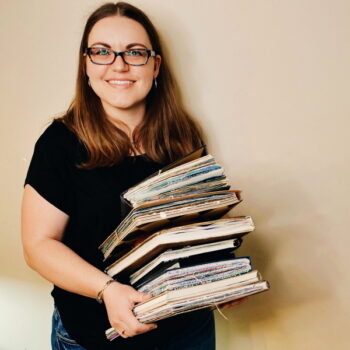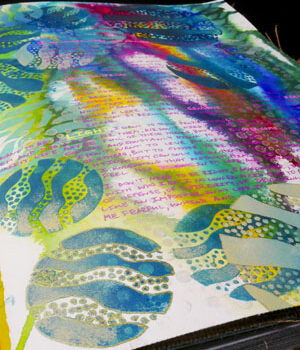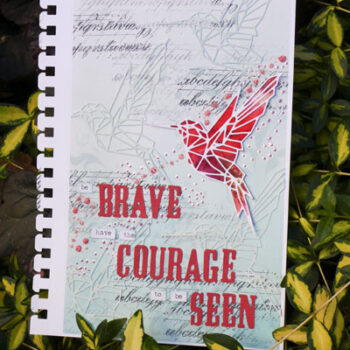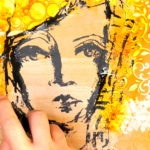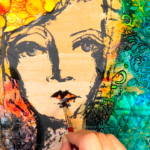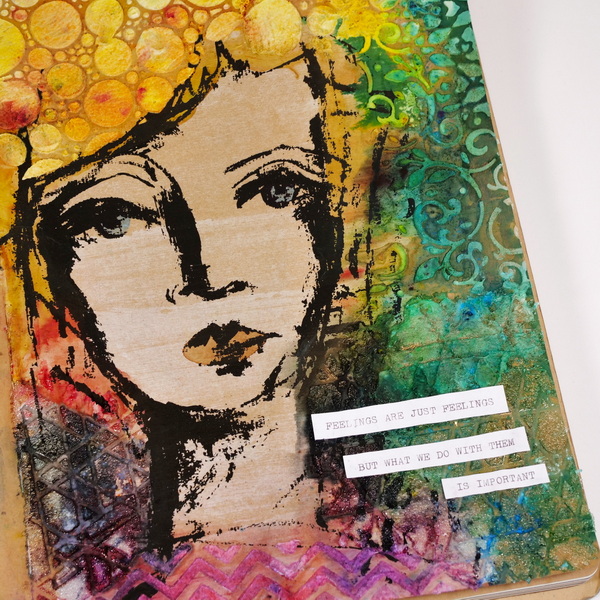
Mixed Media Textures Using Brushos
Are you looking for ways to add texture into your art journal? Try this fun and easy technique creating mixed media textures using Brushos. Brusho Crystal Colours are a vibrant watercolor pigment powder that is often used for watercolor painting. My favorite way to use them is in mixed media projects and today I will share with you how I like to use them in my art journal pages.
Hop-A-Long Studio is reader-supported. When you buy through links on our site, we may earn an affiliate commission at no cost to you. Learn more.
Brusho Crystal Colours
If you are looking for an introduction into Brusho Crystal Colours, check out this article. For today’s project, we will be focusing on using them in a less conventional way. I wanted to use them on Kraft cardstock with a variety of mediums that will either absorb or resist the Brushos. This gives us a lot more versatility in how we can use these beautiful powders in our projects.
Art Journal Page Feelings are Just Feelings
Adding Collage Paper

Start by choosing the focal image for your page. For this project I chose one of the faces from the Dina Wakley Faces Collage Paper collection. To remove the harsh edges of the collage paper, gently tear around the edges to create an uneven border. If you have difficulty tearing the paper, dip a paintbrush in water. Paint water onto the paper where you want to tear to soften the fibers. To see a more detailed demonstration of this process, click here.
Collage the paper to the journal page using matte medium. Work in sections by adding matte medium to the kraft journal surface with a paintbrush. Add the collage paper and brush another layer of matte medium on top. Work your way up the image by working in sections to collage the paper to the page. By working in sections, you will get less wrinkles in your image.
When working on Kraft paper, the paper will absorb more of the matte medium than canvas or cardstock. Make sure to add a liberal layer to the surface before adding the collage paper for better adhesion.
Adding Acrylic Pastes and Gels
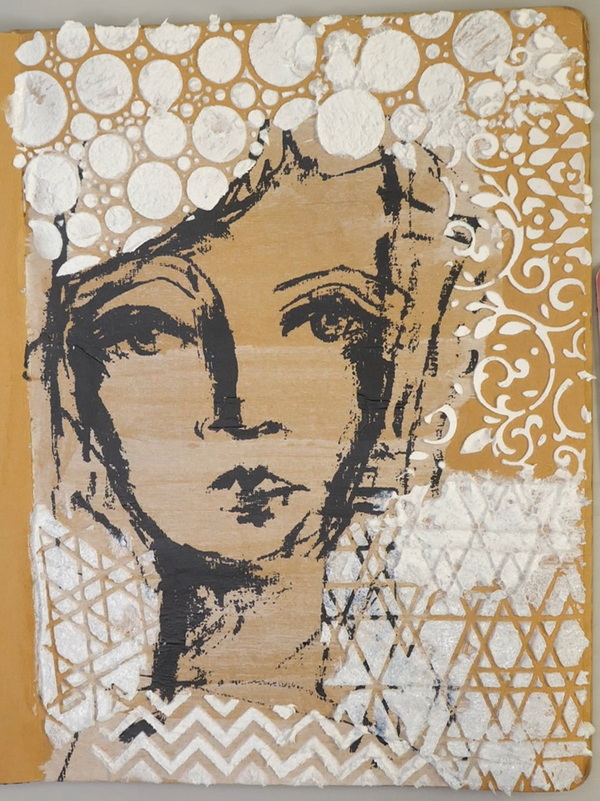
Using your favorite stencils, add acrylic pastes and gels to the page. I chose several stencil designs, pastes and gels for this page.
Using fiber paste through the bubbles stencil I added texture around her head to resemble hair. I also used the same paste with the Zigzag stencil to create pattern on the shirt.
For the background area, I added glass bead gel through a more open stencil design. When working with glass bead gel, stick to stencils with larger open areas. The beads are small, but a more open stencil will make it easier to apply to the surface.
I finished up the background with a stencil and light molding paste. I made a point to overlap the molding paste with both the fibre paste and the glass bead gel. This helps bring the design of the page together.
Set the art journal page to fully dry before adding Brushos.
Adding Brushos
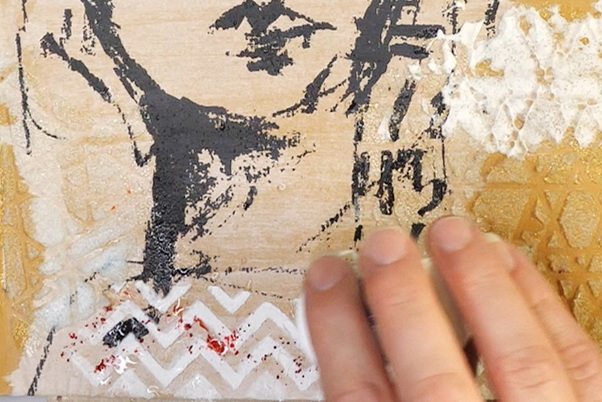
To add mixed media textures using Brushos, start with spritzing the page with water. Tap a bit of the Brushos onto the surface and spritz with more water.
I tend to work in sections for this technique to control the water and color better. For the girl’s shirt, I used purple and rose red Brushos. If you find the color is moving in the wrong direction, tilt the page to so that the wet color will run into the direction you’d like. Add more water and Brushos to get the blend and consistency you desire.
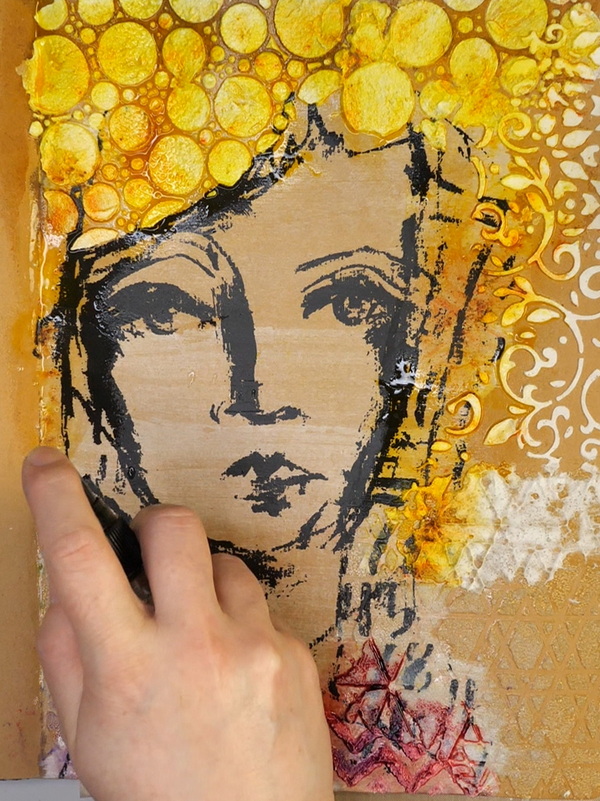
For the area around the girl’s head, I added yellow ochre and lemon. As this is meant to resemble hair, so I added Brushos at the top of the page and to frame her face. This isn’t meant to look realistic, it’s the suggestion of color and shape. I added in a bit of rose red to add an additional color to the hair.
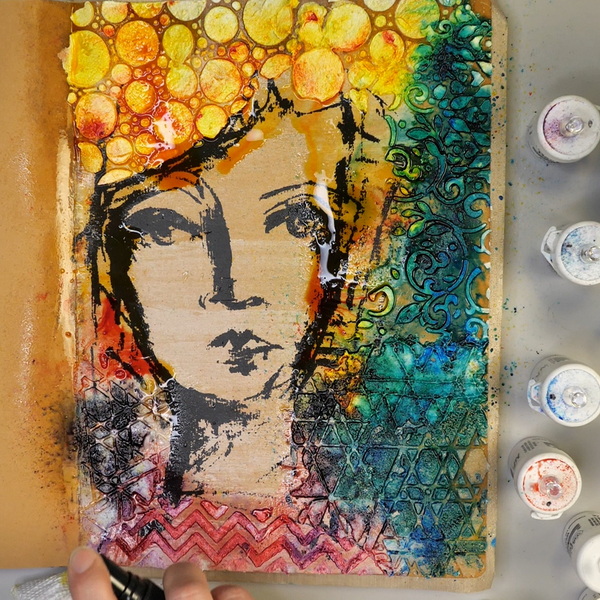
For the rest of the background, I used the colors sea green, turquoise, grey and white.
Depending on the type of acrylic medium you apply, some areas will resist the color (like the glass bead gel) and other areas will absorb the color (like the fiber paste). This gives you different results depending on the gel or paste you choose to use.
Removing Color from the Background
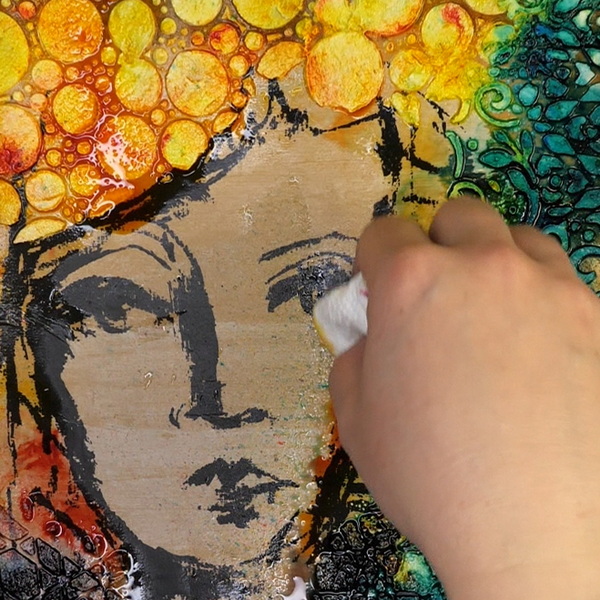
If you find that you’ve added too much color or too much water, you can always remove color. Using a paper towel, dab the color off the page. In some areas, I purposely removed color so that the texture of the acrylic pastes came through with a lighter shade.
As I wanted the girl to remain a neutral color, I used a paper towel to remove any Brushos and water that bled onto her face. Because the collage paper has a layer of matte medium on the surface, this creates a resist. This makes it very easy to remove all color that bled onto her face because the matte medium prevents the Brushos from soaking into the surface.
Using Brushos as a Watercolor Paint
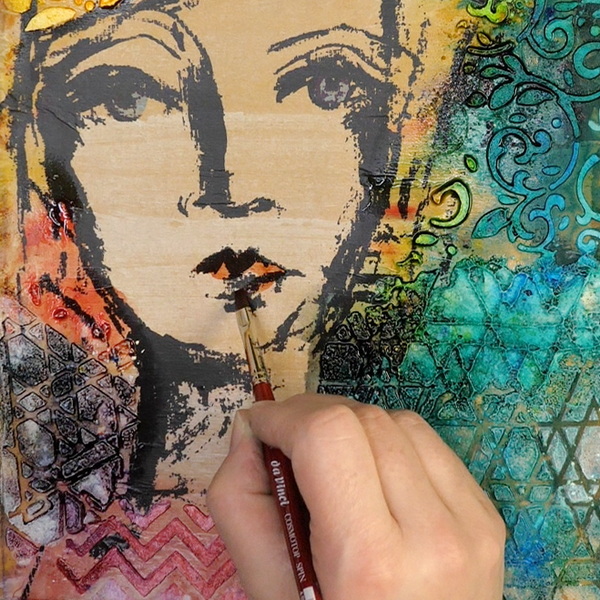
Brushos can also be used as a regular watercolor paint when mixed with water. Tap the Brushos onto a non-stick surface and mix them with a bit of water using a paintbrush.
For this project, I added turquoise to the irises of the eyes to make them bright blue. I also added vermillion to the lips to make them red. There were some areas around her head that I had wiped off too much color. I added in both lemon and yellow ochre to create consistency with her hair and her hairline.
The point isn’t to go too crazy adding in detail. Little pops of color and blending color out can add the final finishing touches to the project.
Adding Shimmery Color Layers

I liked this page as it is, but I wanted to show you how can continue to add additional color. To create a shimmery effect to the surface, I like using a variety of wax pastes. Using a dry brush you can add highlights to the mediums to create subtle shimmer.
This effect can also be done with metallic paint mixed with water. Be aware that when you add liquid mediums to the surface, it will rewet the Brushos and the color and metallic will mix.
Adding Journaling
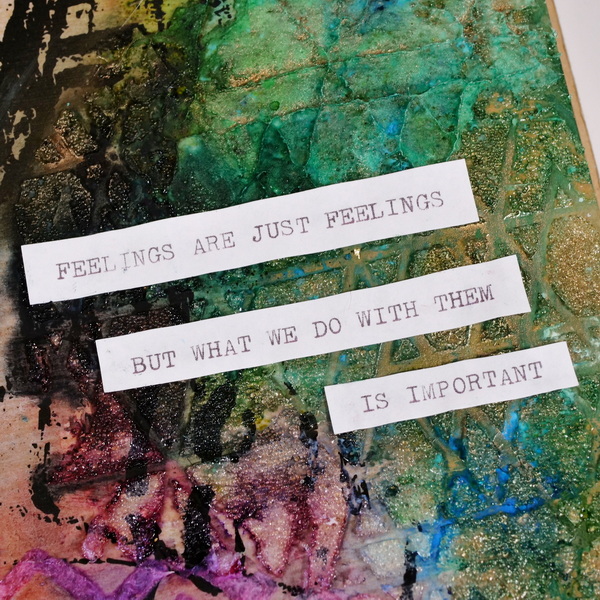
For this page, I typed my words out using a manual typewriter. Cut out the words and use glue to attach them to the page. I would suggest using a heavy gel for this step as it will stick to the uneven surface of the acrylic medium better than regular glue.
Journaling Inspiration
As with every page in my journal, it usually starts with something I’ve been thinking about lately. My words for this page are:
Feelings are just feelings, but what we do with them is important.
I have recently had an epiphany regarding feelings and how I view feelings in my life. I know from talking with friends that I’m not the only one who battles with feelings and what to do with them.
Questions to Ask Yourself
So how do you relate to your feelings? Do you judge them, equating them as good or bad? Do you view your own identity through your feelings?
I’ve asked myself these questions a lot lately. I’ve realized how much I suppressed my feelings in the past because I judged feelings as good or bad. If I felt anger, judgemental thoughts, or anxiety, I would judge those feelings and think that I was being a “bad person.”
Feelings are Just Feelings
Recently, I’ve come to the realization that feelings are just feelings. Feelings come to us as a trigger from our environment. Feelings come out of interactions with others and can be affected by our health and sleep.
I used to judge my feelings, but now I’m learning to embrace them. To see them for what they are: feelings. Feeling can help us understand how we fit into our environment. We can feel happy and joyful, when we are around good people and in a safe place. Feelings can also let us know when things are off. That internal stress or feelings of anxiety, frustration and anger can tell us something important.
What to Do with Feelings
It’s good for us to embrace feelings instead of suppressing them, but what do we do with these feelings? We need to understand our feelings, but not necessarily to share them immediately with others. We should pause long enough evaluate our feelings. This can keep us from saying or acting in ways that we will regret.
I have had times where I have immediately reacted to my situation and regretted it. I’ve also been the recipient of aggressive and angry behaviour from others. This is where practicing emotional intelligence is so important.
If you struggle with sharing your feelings calmly and with kindness, they shouldn’t be shared. This doesn’t mean that you should never share them. But perhaps it means that you need to evaluate them before talking with the person about your feelings. I always think about the phrase “say it nice.” It important that we learn how to share our feelings rationally, with authenticity, and to strive to be kind and firm in our responses.
Questions?

Do you have any questions about creating mixed media textures using brushos? Or any thoughts on the idea of feelings and how we should handle them? I would love to know what you think about this project and the self-care topic. I would love to start a conversation with you when you leave a comment below.
Project Supply List
Simply Simmons Rigger Paint Brush
Dina Wakley Collage Tissue Paper Faces
Tim Holtz Stencil Zigzag THS047
Stencil Wild Whisper NWD Bubbles
Simon Says Stamp Abstract Triangle Stencil
Studio Light Grunge Mask Flourish Stencil
Simply Simmons Synthetic Paint Brush
Brusho Crystal Colours Rose Red
Brusho Crystal Colours Yellow Ochre
Brusho Crystal Colours Sea Green
Brusho Crystal Colours Turquoise
Brusho Crystal Colours Cobalt Blue
Brusho Crystal Colours Vermillion
Sizzix Lustre Wax Lilac Rainbow
Golden Iridescent Bronze Fluid Paint
Finnibar Art Alchemy Metallique Wax Bronze Age
daVinci Costmotop Spin Watercolor Brush Flat Size 4



